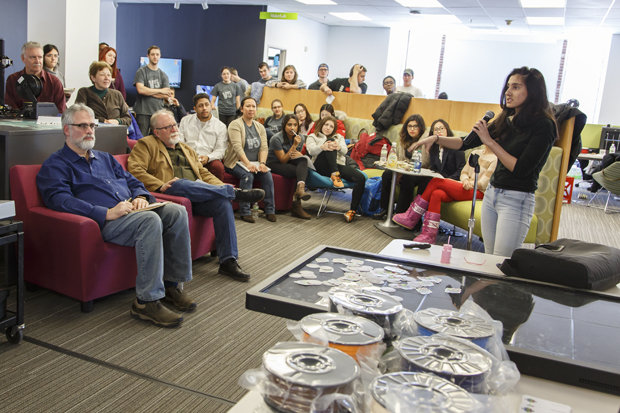Featured Projects
Read about ongoing research projects and class collaborations with BDI staff and the rest of the Brandeis community. If you're interested in starting your own project, check out our Service Catalog for ideas or send us an email.
Featured News

A planter that waters itself? A farm irrigation system that runs on its own waste? A portable mattress that traps heat and weighs less than a suitcase?
These inventions may seem futuristic, but a group of Brandeis students put their 3D printing skills to the test on March 17 and 18 to develop those creations and more as part of the Printathon V5.0 Design Challenge.



